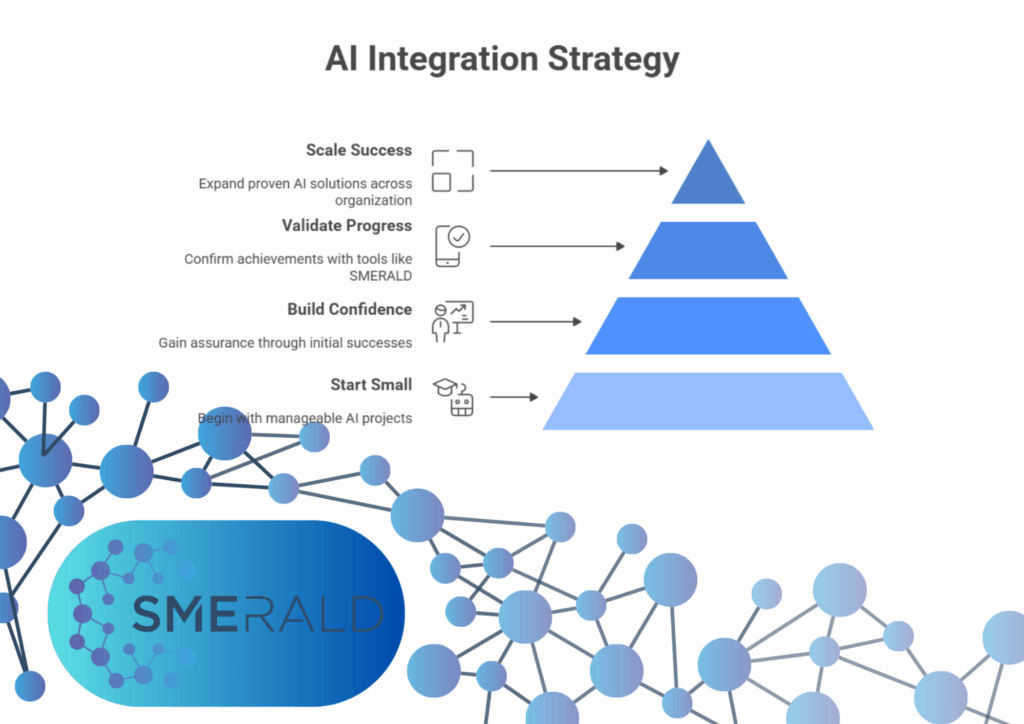The SMERALD Effect: 3 Key Findings Driving Sustainable AI Adoption
As the SMERALD project nears completion, one question becomes central:
What actually works when helping SMEs and professionals adopt AI in a meaningful, sustainable way?
The newly released Implementation Strategy Report brings together lessons from all piloting activities across Europe. From local companies to training organisations, from hands-on experimentation to competence-based reflection, the results reveal clear patterns of what truly helps SMEs move forward with AI.
Here are the three most important findings shaping the SMERALD approach.

- A Flexible Approach That Works for Every SME
One of the strongest insights from the report is SMERALD’s adaptability.
Despite different national contexts, industries, and organisational sizes, SMEs were able to integrate AI learning without major changes to their daily operations. This is largely due to SMERALD’s:
- modular structure,
- short, focused learning units,
- competence-oriented design,
- and blended learning method.
Whether in Germany, Bulgaria, Italy, or Greece, SMEs found entry points that matched their workload and needs.
The message is clear: organisations don’t need big resources to start their AI journey — they need a pathway that fits their reality.
- Practical, Hands-On Learning Drives Real Engagement
The report highlights a simple truth:
SMEs engage with AI only when it becomes immediately useful.
During the piloting, the strongest learning effects came when participants used their own material — real scripts, datasets, project descriptions, or workflows. These practical tasks changed the learning dynamic completely: AI was no longer abstract but became a solution to familiar challenges.
This confirmed SMERALD’s core assumption:
AI competence grows fastest through guided experimentation with real work, not through theoretical presentations.
- Long-Term Adoption Starts With Small, Sustainable Steps
The final finding is perhaps the most important for future adoption:
Successful AI integration doesn’t come from “big transformation projects,” but from small, repeatable improvements.
SMEs that succeeded followed a simple pattern:
- Start small
- Build confidence
- Validate progress
- Scale what works
With tools like the SMERALD Competence Spider, LEVEL5 validation, and the learning platform, they could track their development and maintain momentum.
The report also emphasises sustainability: SMERALD now provides a long-term resource that organisations can continue using as an open learning tool, a CPD structure, and a shared European practice.

